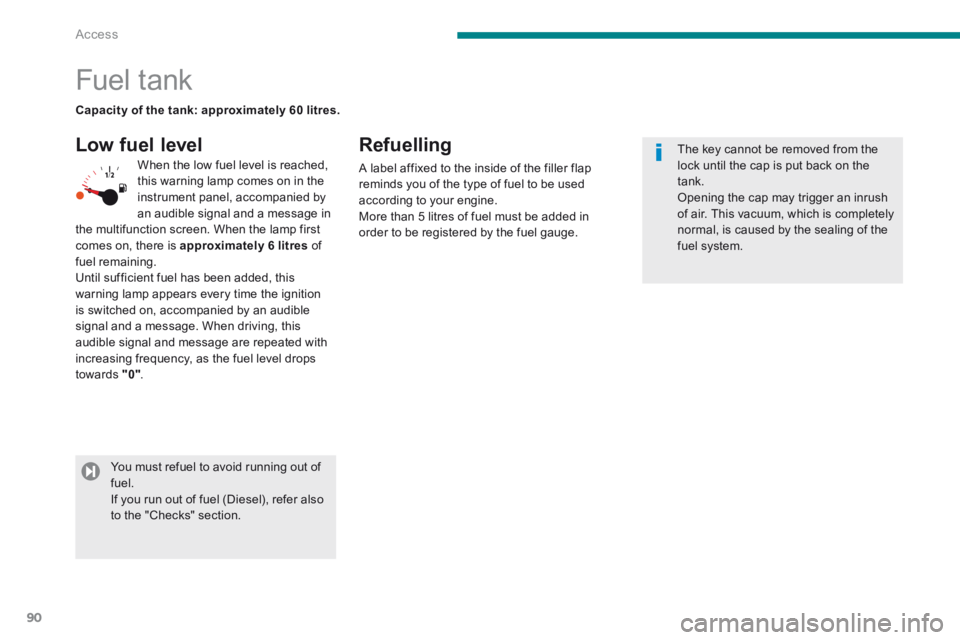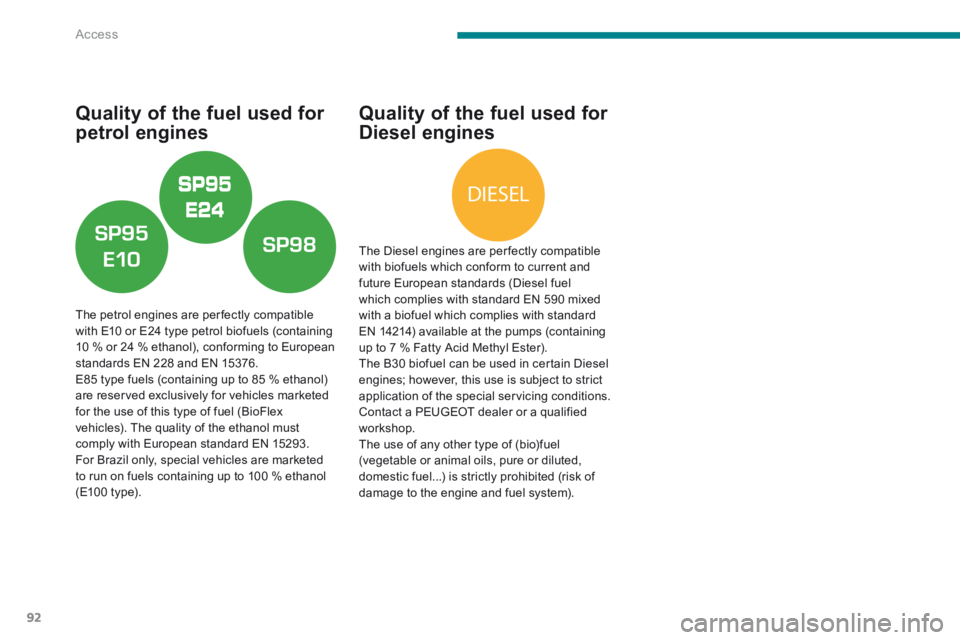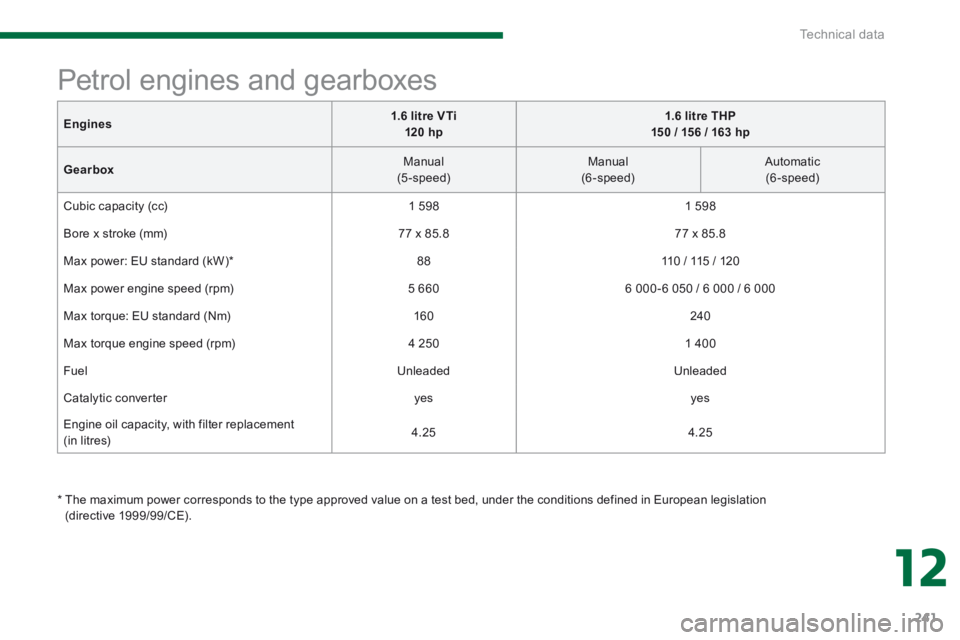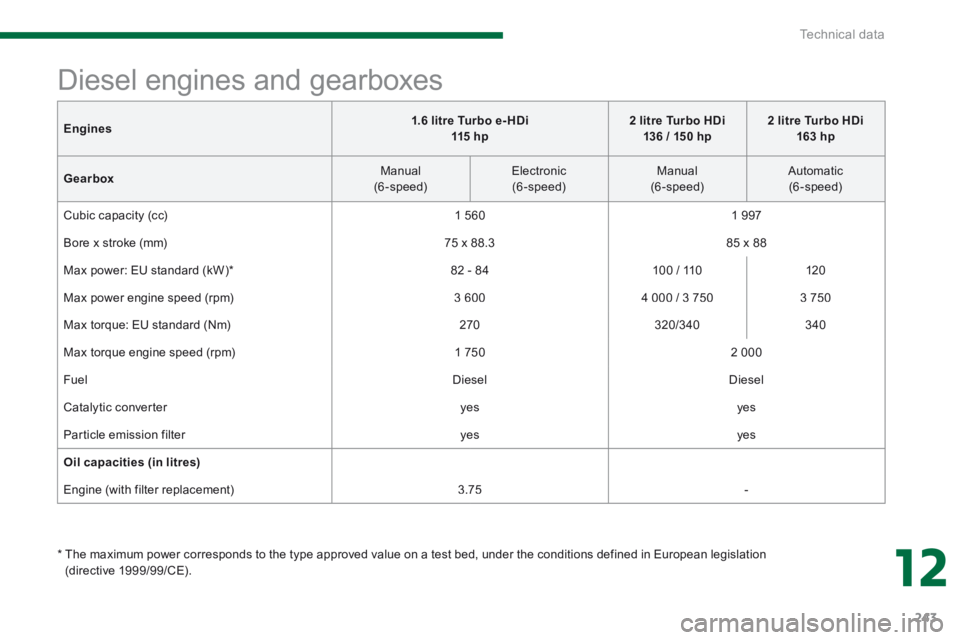2014 PEUGEOT 3008 fuel type
[x] Cancel search: fuel typePage 8 of 389

75
99
90
Familiarisation
6
Remote control key
A. Unfolding / Folding the key.
Normal locking (press once; fixed lighting of the direction indicators).
Deadlocking the vehicle (press twice in succession; fixed lighting of the direction indicators).
Complete or selective unlocking of the vehicle (rapid flashing of the direction i n di c ato r s).
or
When the light is poor, detected by a sensor, the remote switching on of the dipped headlamps and sidelamps makes your approach to the vehicle easier. This function can be programmed via the configuration menu.
Fuel tank
1. Opening the fuel filler flap. 2. Opening and hooking the fuel filler cap.
The type of fuel to be used is indicated on the inner face of the fuel filler flap. Capacity of the tank: approximately 60 litres.
Welcome lighting
On Diesel vehicles, the fuel filler neck incorporates a misfuel prevention device which prevents filling with petrol.
Access
Page 31 of 389

1
Monitoring29
Vehicle parameters
This menu allows you to activate or deactivate certain driving and comfort equipment * : - wiper linked with reverse gear (refer to the "Visibility" section), - selective unlocking (refer to the "Access" section), - guide-me-home and welcome lighting (refer to the " Visibility" section), - interior mood lighting (refer to the "Visibility" section), - directional headlamps (refer to the "Visibility" section),
- automatic or manual parking brake (refer to the "Driving" section).
Choice of units
This menu allows you to select the units: temperature (°Celsius or °Fahrenheit) and fuel consumption (l/100 km, mpg or km/l).
Choice of language
This menu allows you to select the display language.
Main menu
Press button 1 for access to the main menu and select one of the following functions: - " Vehicle parameters", - "Choice of language", - "Choice of units". Press button 2 or 3 to move in the screen. Press button 1 again to confirm the selection.
Indicator and warning lamps
When the ignition is switched on
Certain warning lamps come on for a few seconds when the vehicle's ignition is switched on. When the engine is started, these same warning lamps should go off. If they remain on, before moving off, refer to the information on the warning lamp concerned.
Associated warnings
The illumination of certain warning lamps may be accompanied by an audible signal and a message in the multifunction screen.
Visual indicators informing the driver that a system is in operation (operation or deactivation indicator lamps) or of the occurrence of a fault (warning lamp).
The main menu and its associated functions can only be accessed when stationary, via buttons 1 to 4 . A message appears in the screen, above a certain speed threshold, indicating that the main menu cannot be displayed. The trip computer displays can only be
accessed while driving, via buttons 2and 3 (refer to the "Trip computer" section).
The warning lamps may come on continuously (fixed) or flash. Certain warning lamps may come on in one of two different modes. Only by relating the type of illumination to the operating status of the vehicle can it be ascertained whether the situation is normal or whether a fault has occurred.
* According to country.
Page 92 of 389

Access
90
Fuel tank
Low fuel level Refuelling
A label affixed to the inside of the filler flap reminds you of the type of fuel to be used according to your engine. More than 5 litres of fuel must be added in order to be registered by the fuel gauge.
When the low fuel level is reached, this warning lamp comes on in the instrument panel, accompanied by an audible signal and a message in the multifunction screen. When the lamp first comes on, there is approximately 6 litres of fuel remaining. Until sufficient fuel has been added, this warning lamp appears every time the ignition is switched on, accompanied by an audible signal and a message. When driving, this audible signal and message are repeated with increasing frequency, as the fuel level drops towards "0" .
Capacity of the tank: approximately 60 litres.
You must refuel to avoid running out of fuel. If you run out of fuel (Diesel), refer also to the "Checks" section.
The key cannot be removed from the lock until the cap is put back on the tank. Opening the cap may trigger an inrush of air. This vacuum, which is completely
normal, is caused by the sealing of the fuel system.
Page 94 of 389

DIESEL
Access
92
Quality of the fuel used for
petrol engines
The petrol engines are per fectly compatible with E10 or E24 type petrol biofuels (containing 10 % or 24 % ethanol), conforming to European standards EN 228 and EN 15376. E85 type fuels (containing up to 85 % ethanol) are reserved exclusively for vehicles marketed for the use of this type of fuel (BioFlex vehicles). The quality of the ethanol must comply with European standard EN 15293. For Brazil only, special vehicles are marketed to run on fuels containing up to 100 % ethanol (E100 type).
Quality of the fuel used for
Diesel engines
The Diesel engines are per fectly compatible with biofuels which conform to current and future European standards (Diesel fuel which complies with standard EN 590 mixed with a biofuel which complies with standard EN 14214) available at the pumps (containing up to 7 % Fatty Acid Methyl Ester). The B30 biofuel can be used in certain Diesel engines; however, this use is subject to strict application of the special servicing conditions. Contact a PEUGEOT dealer or a qualified workshop. The use of any other type of (bio)fuel (vegetable or animal oils, pure or diluted, domestic fuel...) is strictly prohibited (risk of damage to the engine and fuel system).
Page 95 of 389

4
Access93
Misfuel prevention (Diesel) *
When a petrol filler nozzle is introduced into the fuel filler neck of your Diesel vehicle, it comes into contact with the flap. The system remains closed and prevents filling. Do not persist but introduce a Diesel type filler nozzle.
* According to country of sale.
Mechanical device which prevents filling the tank of a Diesel vehicle with petrol. It avoids the risk of engine damage that can result from filling with the wrong fuel. Located in the filler neck, the misfuel prevention device appears when the filler cap is removed.
Operation
It remains possible to use a fuel can to fill the tank. In order to ensure a good flow of fuel, do not place the nozzle of the fuel can in direct contact with the flap of the misfuel prevention device and pour s l ow l y.
Travelling abroad
As Diesel fuel pump nozzles may be different in other countries, the presence of the misfuel prevention device may make refuelling impossible. Before travelling abroad, we recommend that you check with the PEUGEOT dealer network,
whether your vehicle is suitable for the fuel pumps in the country in which you want to travel.
Page 243 of 389

12
Technical data241
Engine s 1.6 litre VTi 120 hp1.6 litre THP 150 / 156 / 163 hp
Gearbox Manual (5-speed) Manual (6-speed) Automatic (6-speed)
Cubic capacity (cc) 1 5 9 8 1 5 9 8
Bore x stroke (mm) 77 x 85.8 77 x 85.8
Max power: EU standard (kW) * 88 110 / 115 / 120
Max power engine speed (rpm) 5 660 6 000 - 6 050 / 6 000 / 6 000
Max torque: EU standard (Nm) 160 240
Max torque engine speed (rpm) 4 250 1 400
Fuel Unleaded Unleaded
Catalytic converter yes yes
Engine oil capacity, with filter replacement (in litres) 4.25 4.25
Petrol engines and gearboxes
* The maximum power corresponds to the type approved value on a test bed, under the conditions defined in European legislation (directive 1999/99/CE).
Page 245 of 389

12
Technical data243
Engines1.6 litre Turbo e- HDi 115 h p2 litre Turbo HDi 136 / 150 hp2 litre Turbo HDi 163 hp
Gearbox Manual (6-speed) Electronic (6-speed) Manual (6-speed) Automatic (6-speed)
Cubic capacity (cc) 1 560 1 9 9 7
Bore x stroke (mm) 75 x 88.3 85 x 88
Max power: EU standard (kW) * 82 - 84 100 / 110 120
Max power engine speed (rpm) 3 600 4 000 / 3 750 3 750
Max torque: EU standard (Nm) 270 320/340 340
Max torque engine speed (rpm) 1 750 2 000
Fuel Diesel Diesel
Catalytic converter yes yes
Particle emission filter yes yes
Oil capacities (in litres)
Engine (with filter replacement) 3.75 -
Diesel engines and gearboxes
* The maximum power corresponds to the type approved value on a test bed, under the conditions defined in European legislation (directive 1999/99/CE).